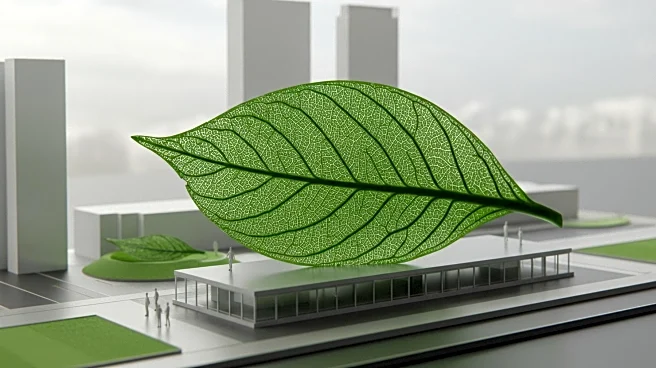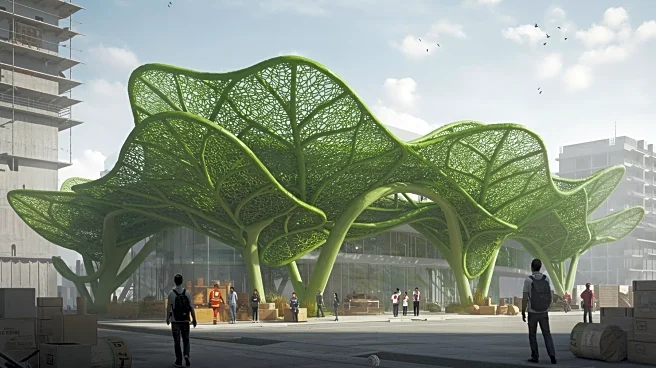What's Happening?
Researchers at ETH Zurich have developed a photosynthetic material that can be 3D-printed into architectural elements, as reported in a study published in Nature Communications. This innovative material incorporates cyanobacteria, which utilize sunlight to capture carbon dioxide, thereby growing new biomass and forming minerals that trap carbon dioxide. The material is currently being showcased at the Canada Pavilion in the Venice Architecture Biennale exhibition. The installation serves as both a scientific experiment and a public demonstration, designed to provide optimal conditions for the cyanobacteria to thrive. The potential of this material to improve air quality and reduce the climate footprint of construction is significant, given that concrete production alone accounts for approximately 8% of global heat-trapping pollution.
Why It's Important?
The development of this photosynthetic material could have a substantial impact on reducing the environmental footprint of the construction industry. With concrete production being a major contributor to global pollution, integrating living, low-energy materials into building designs could help mitigate this issue. The American Lung Association has highlighted that poor air quality affects around 156 million Americans, leading to long-term health consequences. By potentially storing carbon dioxide directly in buildings, this material could complement existing efforts to reduce pollution from cement manufacturing. However, challenges such as stability, safety standards, and maintenance need to be addressed before widespread adoption.
What's Next?
The next steps involve scaling the material for real-world applications and verifying its carbon capture capabilities outside controlled environments. Researchers are already testing the material on a shingle-clad façade, observing the formation of a green patina by the microbes. If successful, this technology could be integrated into future construction projects, contributing to global efforts to improve air quality and reduce carbon emissions. Continued research and development will focus on overcoming the current hurdles and proving the material's effectiveness at a larger scale.
Beyond the Headlines
This development highlights the intersection of biotechnology and architecture, offering a novel approach to addressing climate change. The ethical implications of using living organisms in construction materials raise questions about sustainability and the long-term impact on ecosystems. Additionally, this innovation could inspire further research into bio-based materials, potentially leading to a paradigm shift in how buildings are designed and constructed.











